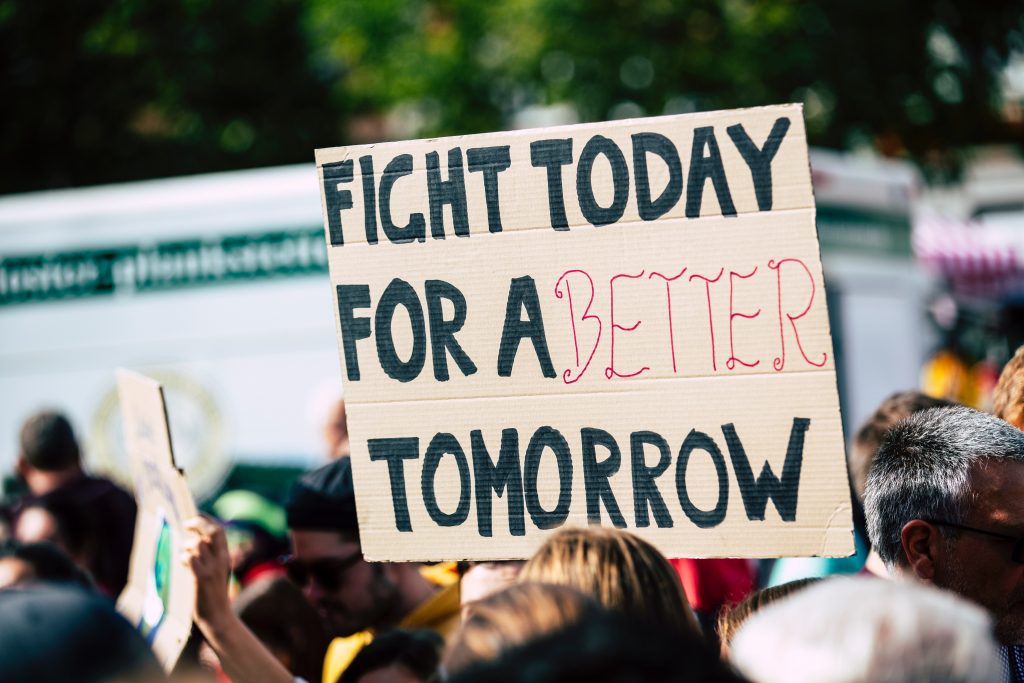This article was originally authored by LHH’s Mary-Clare Race.
What is on the minds of CHROs as they face the realities of a post pandemic world of work?
Recently, LHH hosted a virtual roundtable with a dozen top HR executives from some of our largest strategic clients. The meeting was designed to identify pressing concerns around workforce renewal and transformation in these perilous times. A lot of obvious topics were covered: the impact of virtual work; pressures to downsize; uncertainty around the timing of the resumption of business, and how to keep people engaged.
However, the common theme cutting across all these topics was culture.
Before the pandemic hit, a group of CHROs like this would have focused the discussion on areas such as talent management, leadership development and the global skills shortage. Although those will always be top concerns for the highest-level HR executives, there is increased awareness about culture, and in particular, the key role it plays in defining what an organization does and how it goes about doing it.
.jpg?h=683&iar=0&w=1024&hash=1A653E79CA4BCAC6ADA97D49D759F274)
The questions that arose from our virtual meeting were revealing. How can I get my leaders on board with seismic change necessary to respond to pandemic pressures? How can I develop an organizational mindset that sees the workforce as a renewable resource that must change to meet future opportunities? How can I ensure that the changes I introduce now are sustainable well into the future?
Some organizations are well on the way to confronting and answering those questions, even with the added stress of the pandemic. However, too often in the past, many senior business leaders have missed the critical link between culture and success. We introduced initiatives to build better leaders, develop careers and provide opportunities to learn but often neglected the organizational culture needed to ensure these efforts became more lasting and meaningful.
This disconnect was clearly enunciated in a 2018 research survey conducted by LHH in partnership with HR.com that provides powerful insight into how organizations approach workforce transformation.
Our survey—which captured the insights of more than 1,200 HR professionals across 20 countries and a wide swath of industries—established that while technology is often viewed as the catalyst for transformation, culture is the factor that determines whether it is successful.
For example, nearly six in 10 respondents identified “advances in digital technologies” as the driving force behind the need to transform workforces. That is not surprising in and of itself; with the rapid growth of solutions based on AI and machine learning, we’re all trying to harness the power of new technologies. In competitive industries, no one wants to get left behind in applying the best new tools available.
However, 54% of respondents identified culture as the biggest barrier to workforce transformation. That makes sense on many levels. Although it can be complex, acquiring and deploying new technology is actually easier than designing and instilling a new organizational culture. In the context of any workforce transformation, culture and technology are completely intertwined. No matter how powerful the technology, the mindset of your workforce needs to sync with organizational goals. When there is a disconnect, you have a workforce that can be resistant to the technology that’s being introduced.
Other barriers cited in the survey support this notion that culture ultimately determines the success of a workforce transformation. After general concerns about culture, the next two most-cited obstacles were a lack of discipline in the organization’s approach to change and mediocre leaders who are not held accountable. These are both intimately connected to issues of culture.
The connection between culture and workforce transformation seems clear, although the solutions for an organization that suffers from a weak or poorly defined culture are not. As was demonstrated in the LHH CHRO roundtable, even the best HR executives can find themselves struggling to find answers when culture needs a tune up.
There are some best practices—overarching principles of potent and focused cultures culled from successful organizations—that are worth examining.
.jpg?h=683&iar=0&w=1024&hash=D844A2CFA48DDFE9431B195F673FA9CD)
Make your organization antifragile
In his seminal 2012 book, scholar and author Nassim Nicholas Taleb coined the term “antifragility” to describe a phenomenon where a system, organism or organization thrives in the face of shocks, volatility, profound mistakes or attacks. Fundamentally different from resilience and robustness, Taleb theorized that organizations demonstrate anti-fragility when they can learn fast from current conditions and adapt in a way that allows them to take advantage of volatility. In many ways, this perspective has become more relevant than ever as organizations chart a future course in a pandemic world.
Learning and failing fast, adapting to conditions, finding the hidden opportunities in adversity: there are many examples where businesses on the brink of disaster came back, bigger and better than before. Like Toyota. In 2009, the Japanese automaker was rocked by the biggest recall in automotive manufacturing history and supply chain problems that shook the company’s very foundations. By 2013, however, Toyota was bigger and more profitable than it was before the recalls. Company officials credited a culture where employees throughout the organization were indoctrinated in rapid problem solving. Manufacturing and supply chains were fixed, sales and marketing rebranded the company, and the future was once again bright.
Bake accountability into your culture
In August of 2008, Maple Leaf Foods—a century-old Canadian meat and value-added food company—discovered an outbreak of a deadly bacteria in a huge Toronto-based processing plant. Before all the tainted products could be recalled, 57 became seriously ill, 22 of whom later died. It was a nightmarish scenario for the venerable company, one that could have led to its destruction.
Enter Maple Leaf Foods President Michael McCain. In the hours after the food recall was initiated, McCain took a lead role in not only admitting the mistakes his family’s company had made in managing the Toronto plant but in wholeheartedly and unreservedly apologizing for the deaths and illnesses that followed. In a series of emails sent out to every employee in the company that were later widely published in news media, McCain refused to blame government regulations or food inspectors and assumed the mantle of liability on behalf of the company. In one note, he actually tells employees that he refused to meet with the company’s lawyers before speaking publicly because “they counsel people not to take responsibility.”
McCain’s personal sense of accountability is now credited as a leading reason why his family’s company survived the tainted food crisis and continued to grow and thrive. Even today, McCain and other executives from his company are asked to go to business schools all over the world to talk to students about the essence of personal and organizational accountability.
Make sure Elvis is in the building
Bono, the iconic lead singer of U2, has had success as a philanthropist largely because of his ability to win an audience with the world’s greatest and most powerful leaders, and then convince them to support a range of worthy causes. And Bono isn’t just trading on his celebrity; over a lifetime of asking and being turned down for things, he has developed his own theory of power structures and how they can be convinced to change.
In the 2005 book “Bono,” Bono tells author-journalist Michka Assayas that before he meets with any new organization, he asks two questions. The first was “who can stop this from happening? I wanted to meet the people who could roadblock us.” The second question was, “who’s the Elvis here? In whatever area I was, I wanted to know who’s the boss, who’s the capo di tutticapi (the change agents) here?”
To generate change and cultivate support within a particular organization, Bono said it is essential to defuse your opponents, while empowering the agents of change.
Conclusion
Many organizations steer clear of addressing cultural shortfalls because it’s an enormous issue with many moving parts and no clear and easy solution. In some instances, culture goes unaddressed because it is inconvenient for organizations and their leaders. In both instances, the failure to examine organizational culture and confront weaknesses only sustains the behaviors and attitudes—immaturity and ignorance—that are preventing an individual company from being better.
A company cannot just be defined by a series of processes. It is also a living, breathing thing with beliefs, emotions, and—sometimes—blind spots that its people demonstrate. Rebuilding or rejuvenating culture can be the first step to a better performing organization. And despite our current travails, if we learn as much as possible from past examples and apply the lessons to future challenges, a crisis can be an excellent opportunity to build a culture that is built for the long term.
About the author
.jpg?h=282&iar=0&w=195&hash=846F14B2CB362AFF537AE0B727EEF8FC)



